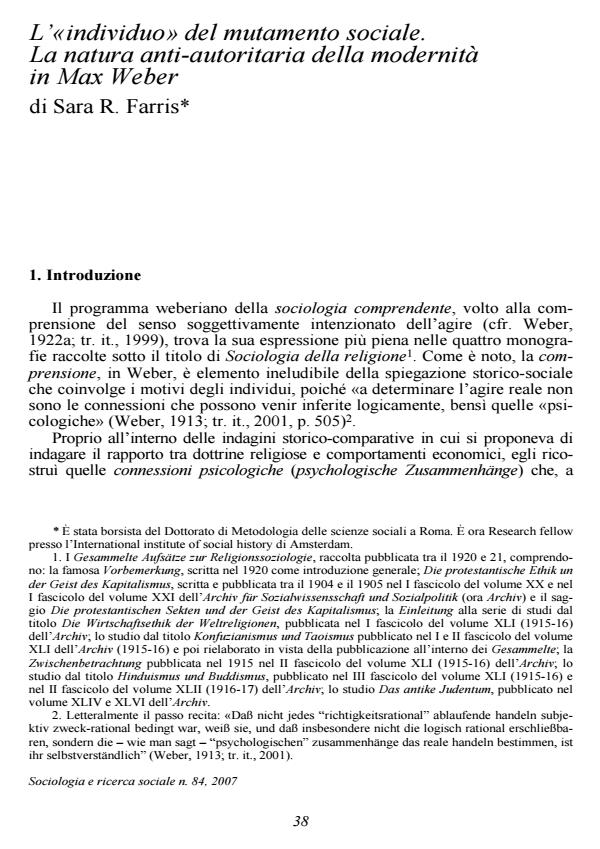L’«individuo» del mutamento sociale. La natura anti-autoritaria della modernità in Max Weber
Titolo Rivista SOCIOLOGIA E RICERCA SOCIALE
Autori/Curatori Sara R. Farris
Anno di pubblicazione 2008 Fascicolo 2007/84
Lingua Italiano Numero pagine 25 P. 38-62 Dimensione file 218 KB
DOI
Il DOI è il codice a barre della proprietà intellettuale: per saperne di più
clicca qui
Qui sotto puoi vedere in anteprima la prima pagina di questo articolo.
Se questo articolo ti interessa, lo puoi acquistare (e scaricare in formato pdf) seguendo le facili indicazioni per acquistare il download credit. Acquista Download Credits per scaricare questo Articolo in formato PDF

FrancoAngeli è membro della Publishers International Linking Association, Inc (PILA)associazione indipendente e non profit per facilitare (attraverso i servizi tecnologici implementati da CrossRef.org) l’accesso degli studiosi ai contenuti digitali nelle pubblicazioni professionali e scientifiche
The moment of interpretive understanding in Max Weber’s Sociology of Religion has been interpreted taking into consideration the sceticism/mysticism dichotomy, and its combination with intra and ultra mundane levels. This essay states the need to take a different point of view. The moment of Verstehen is directed to the reconstruction of individualization processes and their assumptions and historic and politic implications. In the attempt to reconstruct the types of individual that have inaugurated or inhibited western modernity, Weber singles out elements conveyed by Weltreligionen, that structure different constellations of personality, more or less oriented towards change. In this picture, the extremely social and political human individual, at the origin of Modernity expresses anti-authority and individualistic characteristics as the ability to emerge from the constrictions of being member of a group.
Sara R. Farris, L’«individuo» del mutamento sociale. La natura anti-autoritaria della modernità in Max Weber in "SOCIOLOGIA E RICERCA SOCIALE " 84/2007, pp 38-62, DOI: